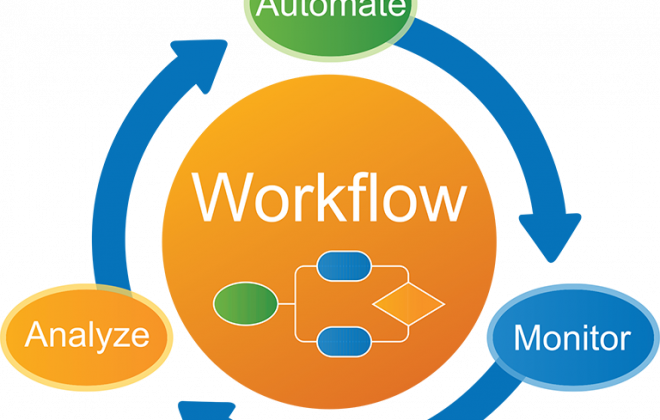3 Major Reasons Why Your Indian SaaS Strategy Is Failing
The software-as-a-service (SaaS) ecosystem in India is witnessing a tremendous increase in activity in terms of the number of new startups emerging and establishing themselves. There’s a belief within the industry that by 2025, India will become the SaaS hub of the world.
Before we deep dive into SaaS and its seemingly bittersweet relationship with the Indian software market, there is a question that needs to be answered first –
What is SaaS?
SaaS is a software distribution model in which applications are hosted by a service provider or vendor on the cloud.
To break it down for you –
- SaaS Market: It doesn’t exist! SaaS is not a market that can be exploited. It is the delivery model through which the market can be exploited. Which one? That’s for you to decide.
- SaaS Pricing: Today, this simple phrase explains the understanding of SaaS pricing – ‘pay as you go’ or what we call subscriptions.
- SaaS Software: Since the software is run on a remote computer, data is stored as well as computed in the cloud, which brings a lot of flexibility and on demand scalability.
SaaS is a combination of all the three points above.
SaaS in India
A year ago in March, Google and Accel Partners shared a report that says that if garnered the right way, India could end up with 8% of the world’s SaaS SMB market. Now that is huge!
Defying the Pareto principle (roughly 80% of the effects come from 20% of the causes), it looks like Indian entrepreneurs have found the 20% SaaS cause but are struggling to produce the desired 80% SaaS effect, or even anywhere close to it. Some might attribute it to the increasing population and traditional work culture, lengthening the process of change, and ultimately inhibiting the speed at which technology is adapted as compared to its western counterparts.
Since SaaS revolution started in India in 2010, some $850 million have been pumped into it as stated in the tracxn report. But it seems like 80% of customers are from regions including the US, EU, Middle East and others while 20% are from India. Although majority of Indian entrepreneurs consider India a hotbed for growth opportunities, they shy away when asked about their SaaS prospects from India. So what are the major reasons behind Indian SaaS companies attracting more customers in its western counterparts while struggling to even build a sizeable user base in India?
Here are a few reasons that might catch your attention –
Relationships Take Precedence Over Service
6 months ago, I had written a blog on why building relationships is important for nurturing a business deal.
Recommended Read: “Beware of Salesmen, Be-with Relationship Builders”
Didn’t read it? Here is a brief summary –
I talked about Orgzit’s success rate in retaining new customers with emphasis on nurturing meaningful and mutually beneficial relationships, and how it has proved to be the key metric in acquiring new customers.
But Tom Dewell from Dewell consulting made an argument that I am forced to mention here –


This stands inevitably true for the Indian target audience. Essentially, Indian SMB market doesn’t exist or is in ‘the early stages of its making’. So when it comes to building relationships, there are two prospects – the enterprise and the individual businessmen looking to expand.
In an enterprise, the sales rep more than often needs to give an offline demo (physically) after touching base, have multiple negotiation cycles, and then (probably) close a deal. Relationship building plays a major role in all the steps.
It so happens that in the process of building relationships, the customer acquisition costs goes off the hook and conversion rates start to dwindle alarmingly, making the prospect vetting process more complicated.
And this is where Tom point comes into play. And ‘The challenger sale’ is an epic book that makes a note that ‘The relationship builder’ might need a few checks in place before jumping into a sales process.
Whereas individual business owners like cloth merchants and traders find the idea of SaaS difficult to swallow. Still acclimatizing with the digital way of doing things, their relationship building process is mostly word-of-mouth references – a process where SaaS has a relatively small role to play.
At this point, you might be thinking that I am going back on my own words that building relationships is not important. But let me conclude this point with a single takeaway –
Key Takeaway: You will need to build relationships, but patiently.
Absence of DIY culture
Indians are huge fans of customer service. There can be several reasons behind it. Personally, I feel 400 years of British oppression plays a vital role in it.
But the real reason is more to do with how Indians are wired. Most businesses are still warming up to the concept of paying a recurring fee compared to one-time software fee with an AMC (Annual Maintenance Contract) of sorts. Moreover, the policies accompanied with the payment terms leaves them more disconcerted than contended.
Let me give you an example –
In one of the news items I read in the newspapers recently, there was some talk about the manager of a hotel, located in one of less tourist worthy places, demanding customer service for a broken router from their Hotel Management software’s team. Why? Their system was down and they needed customer service!
I am as Indian as any of you. But the fact that they couldn’t troubleshoot the problem correctly and asked for customer support where the problem could be solved with the click of the Reset button just worries me in out ability to take the first step – take risks an challenges.
Moreover, since early stage SaaS companies know that their first customers will need a lot of pro-active handholding, it makes a poor argument to preach SaaS to the part of Indian audience (a big one) that will fail to agree with its model completely.
Key Takeaway: The first step towards SaaS is inculcating a DIY approach towards your work processes. DIY is primary! Help is secondary!
Unwillingness To Invest Long-Term
There is a word in Hindi – ‘jugaad’ which essentially translates to a temporary solution. If presented with a technological solution that solves a pain point, Indians are more inclined towards adopting the temporary one than long-term solution.
Moreover, this reluctance towards making upfront investments in technology makes SaaS a perfect business model for Indians. The risks and ROI for SaaS is definitely more. So the reluctance is a bit unjustified. Don’t you think so?
Take care of today, tomorrow will take care of itself
The adaption rate of nascent technology in the west is much more. They know they can unsubscribe whenever they see fit – be it either in the next 3 months, next year, or never. That’s the beauty of SaaS. It offers attractive short-term gains mixed with long-term success. Indian audience is still warming up towards taking that initial step which might take them to new heights.
For example,
While working at Orgzit, I realized how SaaS can become sticky and present itself as a major contributor to your everyday productivity. I started with simple project management to collaborate with freelancers. It worked great. In time, I started handling my tasks in it too. And no sooner did I realize that many customers using Orgzit had the same realization and wanted to use it for multiple purposes.
In one of our initial co-innovation campaigns, when George Thomas, Director, Beth Lifestyles, decided that Orgzit was to become not only a tool to organize their sales cycle but work as a project management tool as well, we knew that he had decided to take the plunge and invest long-term into making Orgzit a successful platform for Beth.
In this extremely informative article posted by inc42 recently, many renowned SaaS founders expressed their opinion on India and SaaS. There is one that made me laugh more than it should –
“In India, Software as a service means service as a software”
Recommended Read: My challenges with running a SaaS startup in India
If you’re thinking to grow an Indian customer base for your SaaS, you need to take the aforementioned factors in serious consideration and come up with a plan that makes sense for you and your team in the long run.
Orgzit is still a new kid in the SaaS block and our experience of working with Indian businesses has been nothing short of challenging but exhilarating. We look forward to closer interactions with the SaaS communities and will surely going get back with more insights and learnings from our personal experiences a few months down the road.









Another big problem is high expectation at lower cost. Their digital transformation is just WordPress and surrounds such free DIY tools.